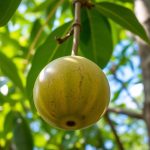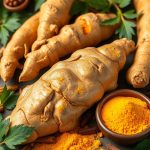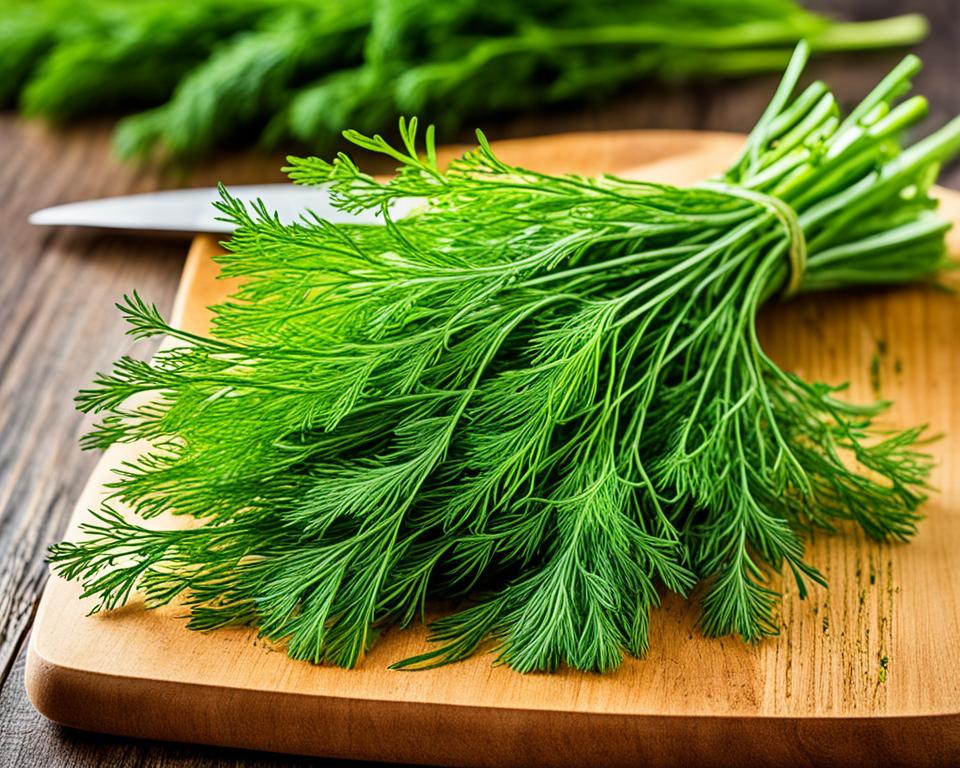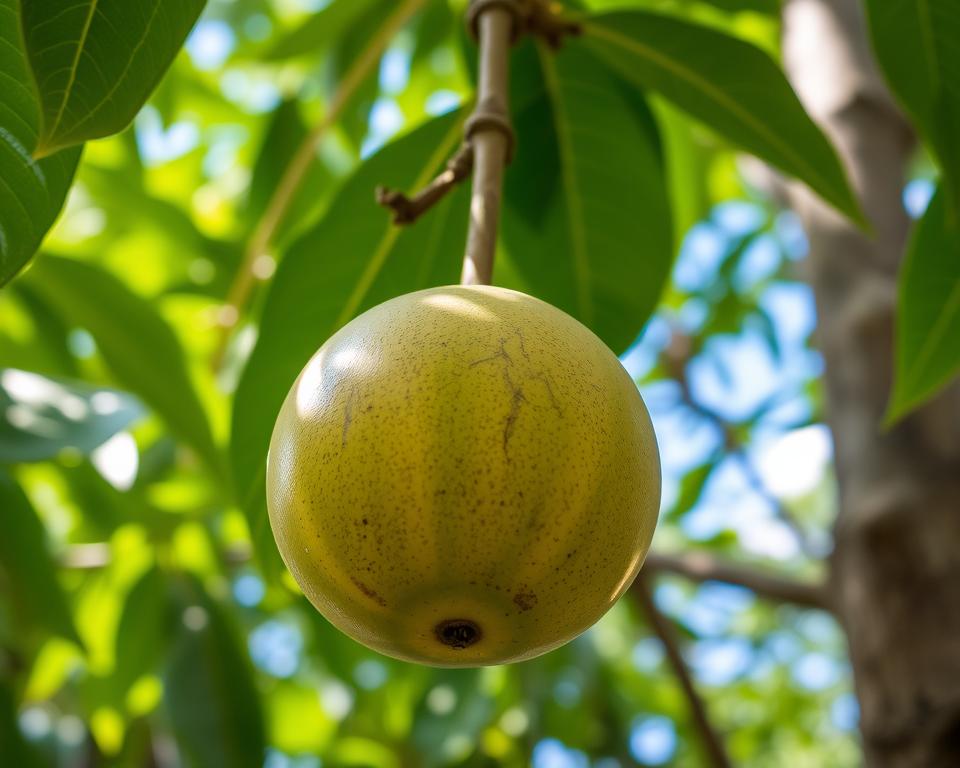Dill weed has bright and herbaceous notes, making it perfect for many dishes. This herb has been loved since ancient times. Today, it’s used in various recipes. This article will look at dill weed’s history, how it’s grown, and its many uses. Read on to learn about growing and keeping this fragrant herb. We’ll also share creative ways to use it in your cooking. You’ll find tips for anything from pickling to creating tasty seasoning blends. Whether you’re experienced in the kitchen or just starting, this guide is for you.
Read interesting things at : tosawakan
Key Takeaways
- Dill weed is a versatile and flavorful culinary herb that can elevate a wide range of dishes.
- This article explores the history, cultivation, and diverse uses of fresh dill weed.
- Readers will learn how to grow and preserve dill weed, as well as innovative ways to incorporate it into their cooking.
- Whether you’re a seasoned home chef or a novice gardener, this guide will inspire you to harness the power of dill weed in your kitchen.
- The article covers topics such as herb gardening, culinary herbs, herb cultivation, dill plant, pickling spice, seasoning blend, and dill seed.
Introduction to Dill Weed
Dill weed is a famous herb in the Apiaceae family. It comes from Eastern Europe and Western Asia. People use its green leaves for a slightly sweet taste in cooking. It’s loved by chefs and home cooks.
What is Dill Weed?
Dill weed is an aromatic plant. It has feathery leaves that bring a fresh flavor to food. The plant is known for its strong scent and taste. People use its leaves fresh, dried, or frozen to keep their flavor.
The History of Dill Weed
Dill weed has been around for thousands of years. It started in Eastern Europe and Western Asia. Many ancient cultures, like the Greeks and Romans, used it for food and medicine.
Over time, its use spread worldwide. Today, dill is a favorite herb in kitchens everywhere.
Cultivating Fresh Dill Weed
Growing dill weed at home is rewarding. It gives you a fresh supply of this tasty herb. You can do this in a small herb garden or a big outdoor area. This guide will help you grow your own dill weed.
Ideal Growing Conditions
Dill plants do best in well-drained, rich soil and lots of sun. Try to keep the soil’s pH between 5.5 and 7.0 for healthy growth. Dill likes it not too hot or cold, with temperatures around 60°F to 80°F.
Planting and Caring for Dill Plants
You can start dill weed from seeds or young plants. Pick a sunny spot to plant them. Put the seeds 1/4 inch deep, and space them 12 to 18 inches apart. Make sure the soil is always a bit wet until they sprout, which takes 7 to 14 days. After they grow, water them often but don’t soak the soil.
To keep having dill, plant new seeds every 2-3 weeks during the season. Remove the flower heads as they form to stop seed production. Following herb gardening and herb cultivation tips leads to a lot of fresh dill weed.
The Aroma and Taste of Fresh Dill Weed
Fresh dill weed has a special taste and smell. It’s bright, herbaceous, and slightly sweet. The green part of the dill herb is known for its strong scent and flavor. This part talks about the experience of using fresh dill weed in cooking. It helps us know dill weed better and find new ways to use it in our food.
When you touch or crush the leaves, they let out a beautiful smell. This scent promises great taste when used in dishes. The dill weed adds something interesting to many foods. It brings both a bit of sweetness and a bit of bitter flavor, mixing well together.
Using fresh dill brings out its light, fresh taste. It feels like being in a lively garden on a sunny day. As it is dried or cooked, its smell and flavor get stronger. Yet, whether fresh, dried, or cooked, dill weed is key in many recipes. It gives a fun flavor and aroma each time.
Culinary Uses of Dill Weed
The bright, herby flavor of dill weed is perfect for many dishes. It’s popular in pickling and salad dressings. This tasty culinary herb can make your food smell and taste better.
Dill Weed in Pickling
Dill weed is a key part of pickling spice. It goes well with the brine, adding a nice smell and taste to pickled foods like cucumbers and onions. Using dill weed in pickling mixes flavors in a great way.
Dill Weed in Salads and Dressings
Adding dill weed to salads and dressings brings freshness. It goes well with creamy dressings or light vinaigrettes. Mixing dill weed with other culinary herbs can make salads taste amazing.
Dill Weed in Soups and Stews
Dill weed adds a lovely scent to soups and stews. It’s great in chicken noodle soup or beef stew. Try sprinkling dill weed over your meal just before serving to keep its taste.
Dill Weed in Global Cuisines
Dill weed brings a unique smell and taste to dishes worldwide. It shines in the bold flavors of the Mediterranean and the elegant meals of Scandinavia. These regions have truly made dill weed a star in their kitchens.
Dill Weed in Mediterranean Cooking
The Mediterranean’s bright sun favors dill weed greatly. It improves tastes in various dishes, like Greek tzatziki and Italian fish stews. Dill weed makes the food’s natural sweet and sour notes pop. It’s common to see it on grilled meats and in pastries there.
Dill Weed in Scandinavian Cuisine
Colder northern regions, like Scandinavia, rely on dill weed for a fresh flavor. It’s in the pickled herring of Sweden and the potato salads of Norway. This herb helps bring out the best in local seafood, dairy, and root vegetables. With dill, these dishes are not only delicious but also elegant.
Looking at how dill weed is used in the Mediterranean and in Scandinavia shows its wide reach. It proves that this herb can blend diverse global flavors. Whether in traditional dishes or new recipes, dill weed has a special place in the hearts and meals of many.
Health Benefits of Dill Weed
Dill weed isn’t just a fragrant herb for cooking. It also brings several health perks to the table. Exploring its nutrients and healing properties uncovers its many pluses. This makes dill weed a great choice for your meals.
Nutritional Value of Dill Weed
Dill weed stands out among herbs for its rich nutrient content. It packs essential vitamins, minerals, and antioxidants. These are great for your overall health. It’s loaded with vitamin A for strong eyes and a healthy immune system. Vitamin C is there for its antioxidant powers. It also offers calcium, iron, and magnesium. These minerals are vital for bones, energy, and cells.
Potential Medicinal Uses
Dill weed doesn’t stop at being nutritious. It’s gaining attention for health benefits too. Herbal medicine has valued it for its healing powers. Recent studies suggest dill weed could fight inflammation and act as an antioxidant and antimicrobial agent. All of this could make it a great natural support for your health and immune system.
Adding dill weed to your diet may be smart, but talking to a doctor first is wise. This herb has a lot to offer. Knowing its broad benefits helps in making good health choices.
Dill Weed Seasoning Blends
Dill weed adds a unique flavor to many dishes when included in seasoning blends. Mixing it with other herbs and spices can open up a world of new tastes. This allows home cooks to make their dishes stand out with distinct flavors.
Classic Seasoning Combinations
Dill weed shines in various classic seasoning mixes. For example, it works well with:
- Dill and Garlic: The freshness of dill weed pairs wonderfully with the strong flavors of garlic. This blend is great for meats, veggies, and dips.
- Dill and Lemon: Lemon’s tang matches dill weed‘s subtle sweetness and grassiness. It’s top pick for seafood, salads, and veggies.
- Dill and Caraway: Earthy caraway seeds blend smoothly with dill weed. Use this mix to add depth to sauerkraut, potatoes, and more.
Home cooks can have fun and customize their seasoning blends. They can tailor them to their liking and the dishes they are preparing.
Preserving Fresh Dill Weed
To keep dill weed tasty all year, you must know how to save it. This part will show you two great ways to keep your dill weed fresh: drying and freezing.
Drying Dill Weed
Drying dill weed is simple yet effective. It keeps the dill weed from your garden or market fresh. To start, pick the dill weed when it’s freshest, wash it, and dry it gently.
Hang the dill weed in bunches upside down somewhere cool, dark, and with good airflow. In a few days or up to a week, it will be dry. You can then store the leaves in airtight containers. Save them for your cooking projects.
Freezing Dill Weed
Freezing dill weed makes it last even longer. Clean the dill weed well and dry it. Then, cut it into small pieces and lay them flat on a tray.
Put the tray in the freezer for about 2-3 hours until it’s frozen. Next, put the frozen dill weed in a sealed bag or container, squeezing out the air. This method keeps the dill weed fresh for months.
Learn how to do these preservation techniques. They’ll let you savor the zesty taste of dill weed all year, even when fresh culinary herbs are hard to find.
Dill Weed Seed and Its Uses
The most used part of the dill weed is its fresh leaves. But the seeds of the dill plant are also popular in cooking. The dill seed has a special taste. It adds a stronger, more earthy flavor that herb dill weed doesn’t have.
People use dill seed alone as a spice. It’s great for making pickles taste unique. Dill seed is also found in many culinary herb mixes. These mixes use it to add more tastes and complexity.
It’s good for home cooks to know how to grow and use dill seeds. By using uses of dill seed, they’ll learn more about cooking. They can find new ways to enjoy the delicious flavor of this popular culinary herb.

Dill Weed in Herb Gardens
Dill weed is loved for herb gardening at home because it’s easy to grow. It gives fresh leaves all the time. Dill weed fits well in any garden, big or small. Adding it enriches your herb cultivation.
Companion Planting with Dill
Dill weed is great when planted next to other plants. Its high, feathery leaves and scent keep certain bugs away. This makes it a good friend to other herbs and veggies in your garden.
Dill scares off aphids, spider mites, and tomato hornworms. Planting it near tomatoes makes a natural shield. You won’t need as many harmful chemicals.
Also, dill’s long roots break up the soil. This helps with water and air flow under the ground. It’s very good for plants like carrots and lettuce.
Knowing how to use dill weed in companion planting boosts your garden’s success. It means more herbs to enjoy in your cooking.
Beyond the Kitchen: Other Uses of Dill Weed
While dill weed is mostly for cooking, it has many other uses. This herb can be used for natural remedies, personal care, and fighting bugs. It’s a lot more than a kitchen ingredient.
Dill weed has a long history in herbal medicine. People used it to help with digestion and reduce gas. It also eases menstrual cramps. New studies show it might fight inflammation and is rich in antioxidants.
In personal care, dill weed appears in many products. Its natural clean and soothing effects make it great for skin and hair products. Researchers say it might even help calm the skin.
Surprisingly, dill weed works as a bug repellent too. Its strong smell keeps insects like mosquitoes away. You can use it in gardens or in sprays to keep pests off.
The story of dill weed doesn’t stop at cooking. It fits into many parts of life, from health to keeping bugs away. Knowing all these uses can help everyone appreciate this herb more.
dill weed
Dill weed comes from the Anethum graveolens plant. It’s famous for its strong smell and taste. This herb has a long history and can be used in many ways.
Dill comes from Eastern Europe and Western Asia. It’s been used in cooking for a very long time. Dill’s green leaves add a unique flavor to many foods. It’s easy to grow, especially in sunny spots. Many people like to grow dill in their gardens.
Dill isn’t just for cooking. It can also be used for health and beauty. And it’s good for keeping bugs away. Learning about dill’s different uses can add fun to cooking and daily life.

Conclusion
We’ve seen that dill weed is a key player in the food world. It’s been used for ages and it’s still a favorite today. No matter where you go, this herb is loved for its taste.
By growing it at home or adding it to meals, anyone can enjoy dill weed. It makes food taste better and brings new flavors to the table. So, start using it and see the difference in your cooking.
From pickling to health benefits, dill weed knows how to make dishes amazing. With this info, you can try lots of ways to use dill weed. It’s a fun journey filled with tasty surprises.










